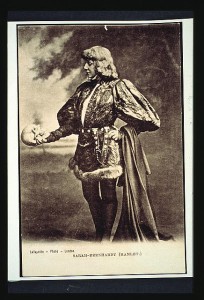The following is an interview given to a Sun reporter by one identified only as a “veteran stage manager” of one of New York’s stock theatres. It was originally published in the New York Sun, February 15, 1885, on page 6.
“Five different and entirely distinct departments must work harmoniously and without the slightest hitch or delay,” continued the stage manager. “These are the actors, the musicians, the carpenters, the property men, and the gas men. A trifling failure made by the least of any of these may turn a performance into ridicule. Each of the mechanical departments has its own boss, but all are subject to the stage manager’s orders, and he in turn is responsible to the manager.”
…
“To the property-man’s department belong all furniture, carpets, curtains, ornaments, and all the small articles used by actors, and known in theatrical parlance as hand or side props. Among these are letters, books, guns, pistols, knives, purses, pocketbooks, money, lamps, candles, cradles, and doll babies. Live props, such as dogs, cats, birds, donkeys, and horses, are also under his charge, and are much disliked, as causing a vast amount of trouble. The side props are taken from the property man every night by the call boy, whose duty is to deliver them to the actors and return them after they have been used to the property room. A good property man is hard to find, for he must be something of a carpenter, an artist, a modeler, and a mechanician [sic].
“Papier-maché has come of late years to be largely used in the manufacture of properties, and nearly all the magnificent vases, the handsome plaques, the graceful statues, and the superb gold and silver plate seen to-day on the stage are made of that material. Some of the imitations of china are so perfectly done and so admirably painted that it is not unusual to see an actor tap them to find out if they are real. In making statues a cast is taken from the clay, and the pulp is then firmly pressed into the moulds. Life-size statues which seem to be of bronze or marble do not weigh more than five or six pounds, look just as well as the genuine, and are easily and quickly handled. For traveling purposes the saving in freight alone is a great economy. Entire suits of armor and fruits of all kinds are made of this useful and inexpensive material. The late Mr. Wallace, the husband of Mme. Ponial, was in his day a celebrated property man. Perhaps the two best now living are the brothers William and George Henry of the Union Square and Madison Square Theatres. Both are really excellent artists, and their salaries are deservedly as large as those of good actors.
“In most New York theatres the property man has one regular assistant and two night aids, who are needed to handle heavy carpets, pianos, and furniture. In the old days carpenters and property men were often prone to dispute about the exact lines which divided their duties, but in well-regulated theatres the departments are now generally willing to help each other. Still, a carpenter or grip is not actually bound to put a finger to a carpet or piece of furniture, nor is a property man, even if not occupied, obliged to help with a scene. Some of the distinctions drawn by custom seem to be singular; thus, a whole tree, if set upon the stage and screwed to it for support, is considered a part of the scene, and, as such, belongs to the carpenters, while a stump upon which a person may sit is in the property man’s department. Again, a flight of stairs is set up by the carpenter, but if a carpet is put on it, that must be done by the property man.”


